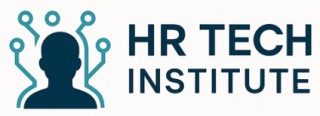Understanding People Analytics
Decoding the Essence of People Analytics
People analytics is a transformative approach that leverages data to enhance workforce management and decision-making. At its core, it involves collecting, analyzing, and interpreting people data to provide actionable insights that drive business outcomes. This field is not just about numbers; it’s about understanding the human elements within an organization and using data-driven insights to improve talent development, workforce planning, and overall business intelligence.
In the realm of people analytics, data is the linchpin. It connects various roles such as HRIS analyst, reporting analyst, and analytics manager, each contributing to a comprehensive understanding of the workforce. These roles work together to ensure that data is not only collected but also effectively analyzed to inform strategic decisions. For instance, a data analyst might focus on the technical aspects of data collection, while a manager people might interpret these analytics insights to guide talent management strategies.
Organizations across the United States and beyond are increasingly recognizing the value of people analytics. By integrating systems like HRIS and workforce analytics, businesses can gain a competitive edge. This integration allows for a more holistic view of workforce dynamics, enabling leaders to make informed decisions that align with business goals.
As you delve deeper into a career in people analytics, you’ll discover the importance of understanding these systems and how they interlink to provide a seamless flow of information. This knowledge is crucial for anyone aspiring to become a specialist or director in this field, as it forms the foundation for effective workforce planning and talent development strategies.
Essential Skills for a People Analytics Career
The Skills That Set You Apart in People Analytics
To excel in a people analytics career, you need a blend of skills ranging from technical prowess to interpersonal competencies. Mastering these skills not only enhances your ability to extract valuable insights from people data but also gears you up for various analytics roles, including data analyst, business intelligence specialist, and workforce planning expert.
- Data Management and Analysis:
Proficiency in data analytics is a cornerstone for this field. Understanding data systems like HRIS (Human Resource Information Systems) and managing extensive datasets allow professionals to conduct effective workforce analytics. Familiarity with SQL, Python, and R can be particularly beneficial for data analysts and data scientists working with big data sets to generate impactful insights.
- Analytical Thinking and Problem Solving:
Analytics insights depend heavily on your capability to think critically about the data at hand. This skill enables a reporting analyst or an analytics manager to interpret trends and create effective workforce planning strategies. Using your analytical mind to link people data with business objectives ensures your reports and strategies are data driven.
- Communication and Visualization:
Conveying complex analytics data in an understandable manner is crucial. Utilizing tools like Tableau or Power BI to visualize findings empowers a manager people or a senior director to make informed decisions swiftly.
- Understanding of HR Functions and Talent Management:
Insight into HR practices, total rewards structures, and talent development processes is vital. A head of people analytics or an HRIS analyst benefits from this expertise as it provides context to the data being analyzed and translates workforce planning into actionable insights.
- Project Management and Leadership:
For those aspiring to be in roles like analytics manager or senior director, the ability to lead teams and manage projects becomes indispensable. Handling various analytics people projects simultaneously requires excellent organizational skills and the ability to lead a team towards achieving common goals.
Develop these skills to navigate the rich landscape of people analytics, paving your way to a promising career filled with opportunities to impact the workforce strategically and effectively.
Harnessing the Right Tools for People Analytics
The world of people analytics relies heavily on a range of sophisticated tools and technologies to interpret and manage workforce data effectively. These tools provide valuable insights that inform business decisions and drive workforce planning.
HRIS Systems: Human Resource Information Systems (HRIS) are integral for managing employee data and streamlining HR processes. An HRIS analyst leverages these systems to provide insights and link people data with business objectives.
Data Analytics Tools: Platforms like Tableau and Power BI enable analytics professionals to visualize data, making it easier to derive actionable insights. Data-driven decision-making is enhanced when analysts employ these tools to transform raw data into meaningful narratives.
Workforce Analytics Tools: These specialized solutions focus on employee-related metrics. Tools such as Visier and Workforce Insight support workforce planning by providing detailed analysis on employee turnover, performance metrics, and talent development.
Advanced Analytics Platforms: Comprehensive solutions like SAP SuccessFactors and Workday offer robust analytics capabilities that link people data to larger business initiatives. They are essential for senior roles like a director of analytics or a manager of people analytics.
Gaining proficiency in these tools is crucial for anyone aspiring to a career in people analytics. These technologies not only support day-to-day tasks but also drive strategic initiatives by integrating total rewards and planning systems efficiently. For further exploration on leveraging technology in HR, consider opting out of AI resume screening debates.
Career Pathways and Opportunities
Exploring Career Pathways in People Analytics
Embarking on a career in people analytics opens a wide array of opportunities for individuals interested in using data to impact human resources decisions positively. This field, integral to modern HR departments, is becoming increasingly significant as businesses strive to make data-driven decisions to enhance their workforce.
For those entering this field, there's a spectrum of roles to consider, each playing a pivotal role in leveraging people data for analytics insights. Here are some common career pathways:
- Data Analyst: Often an entry point into people analytics, a data analyst is responsible for gathering, processing, and interpreting data. They play a crucial role in providing analytics data and insights that inform HR decisions and strategic workforce planning.
- People Analytics Specialist: This role focuses on analyzing trends and patterns in people data, assisting HR teams in aligning talent development with business goals, and enhancing total rewards and compensation strategies.
- HRIS Analyst: Responsible for managing HR Information Systems, these specialists work to ensure data integrity and efficiency of HR workflows. They ensure systems are optimized for accurate workforce analytics and reporting analyst functions.
- Analytics Manager: A managerial role overseeing analytics people within the HR department. Managers focus on linking people data insights with overarching business intelligence, driving strategic initiatives that affect the entire organization.
- Director of People Analytics: At the senior level, directors are tasked with leading the people analytics vision, integrating analytics insights into broader HR and business strategies, and ensuring alignment with organizational goals across the United States or globally.
Each of these roles supports the foundational element of leveraging analytics to drive HR decisions that affect the entire workforce. The development of these career pathways is shaped by an expanding recognition of the value analytics brings to workforce planning and strategic HR management.
Experience and expertise in data analytics, combined with an understanding of HR processes, will significantly enhance career prospects. Whether you aim to be a data scientist working on sophisticated models or an HR business partner integrating analytics insights, the growth and evolution of this field promise exciting professional challenges and opportunities for impact.
Challenges in People Analytics
Identifying Real-World Challenges in People Analytics
Navigating the intricacies of people analytics can be complex, with several challenges confronting professionals in this arena. While data analytics may revolutionize the way we view human resources, implementing it within a business context does not come without hurdles.
One significant challenge is data privacy and security. Handling sensitive people data demands strict compliance with regulations and keen attention to safeguarding employee information. This necessitates robust systems equipped to manage cybersecurity risks and ensure confidentiality.
Another notable issue is data integration. Organizations often utilize multiple systems such as HRIS, business intelligence, and workforce planning tools. Harmonizing data across these platforms to provide coherent insights can be daunting, requiring adept linkages and comprehensive understanding of different data sources.
Additionally, many companies face a talent shortage in hiring individuals with the right analytics skills. The demand for roles such as HRIS analysts, analytics managers, and reporting analysts is high, while the supply remains limited. This adds pressure to upskill existing staff or engage in extensive talent development programs.
Analytics insights are only as valuable as the data and processes behind them. Therefore, ensuring data quality and consistency is critical. Inaccurate or incomplete data can lead to misleading insights, which can hinder effective decision-making and high-level workforce planning.
Lastly, sustaining executive support and alignment with business objectives remains vital. Analytics efforts require backing from senior leadership to be truly impactful. Getting buy-in from the head or director level ensures that analytics initiatives align with broader organizational goals, enabling meaningful intelligence that supports strategic planning and development.
Dealing with these challenges is crucial for professionals aspiring for a successful career in people analytics. Addressing them thoughtfully can propel organizations towards leveraging data-driven insights effectively, turning challenges into opportunities for growth and innovation.
Future Trends in People Analytics
With the rapid advancement in technology and growing reliance on people analytics, it's crucial to stay abreast of emerging trends that will shape the future of this field. As businesses increasingly adopt data-driven approaches, the landscape of people analytics is continuously evolving.
The Rise of AI and Machine Learning
Artificial Intelligence (AI) and machine learning are playing transformative roles in people analytics. These technologies enable the automation of complex data analysis, offering new insights into workforce planning and talent development. By integrating AI-driven systems, organizations can uncover patterns hidden within people's data, leading to better decision-making processes.
Increased Focus on Predictive Analytics
Predictive analytics remains a focal point for forward-thinking business leaders. It facilitates proactive workforce planning by forecasting future trends based on historical analytics data. For HR management professionals, adopting predictive analytics tools can steer total rewards strategies and optimize talent management processes.
Expanding Use of People Analytics Across All Business Areas
People analytics is transitioning from being a niche HR function to an integral part of business intelligence across various sectors. Organizations now expect HR departments to act as strategic partners by leveraging analytics insights that link people strategies to the organization’s broader business objectives. Professionals upgrading their skills in data analytics and people analytics are better equipped to communicate the importance of these insights to stakeholders.
Integration with Other Systems
Effective coordination between people analytics systems and other HR technologies, like HRIS, ensures seamless data flow and comprehensive reporting. This integration is crucial for delivering cohesive analytics solutions that support both operational and strategic initiatives within organizations.
The Imperative for Ethical and Transparent Use of Data
As data usage increases, concerns over data privacy and ethical application are gaining attention. Organizations, especially in countries like the United States, are navigating regulations and establishing frameworks to ensure that people data is used responsibly. Establishing transparent analytics protocols will be key to building trust with employees and stakeholders, emphasizing the need for HR professionals to be well-versed in regulatory compliance and ethical standards.












